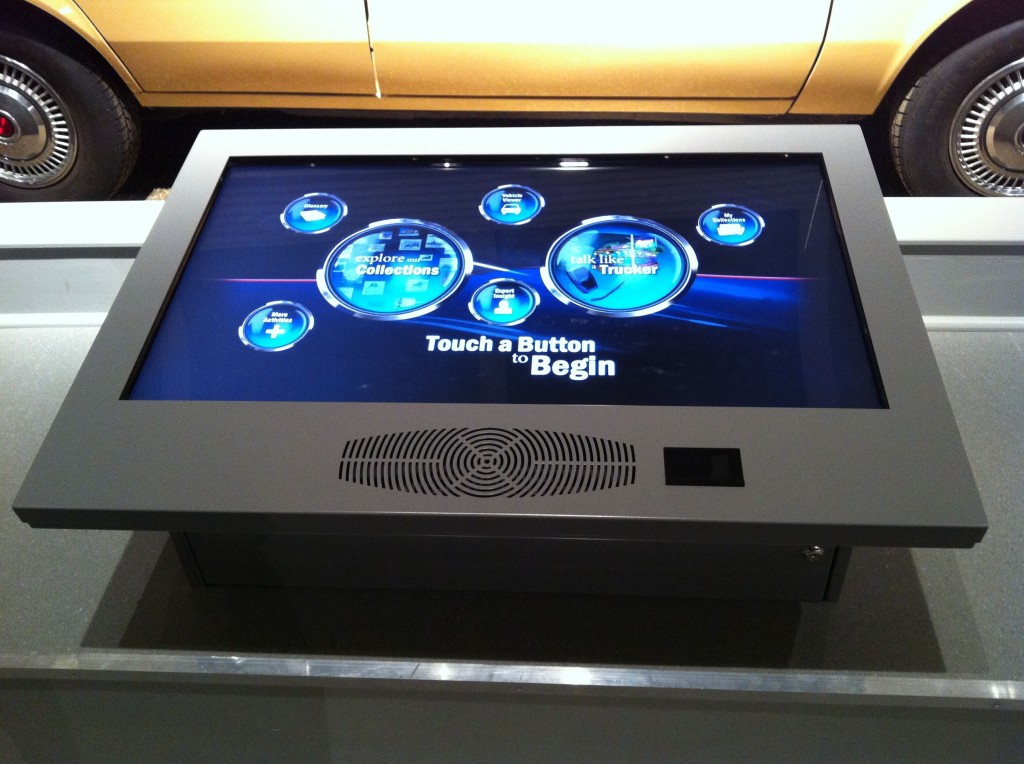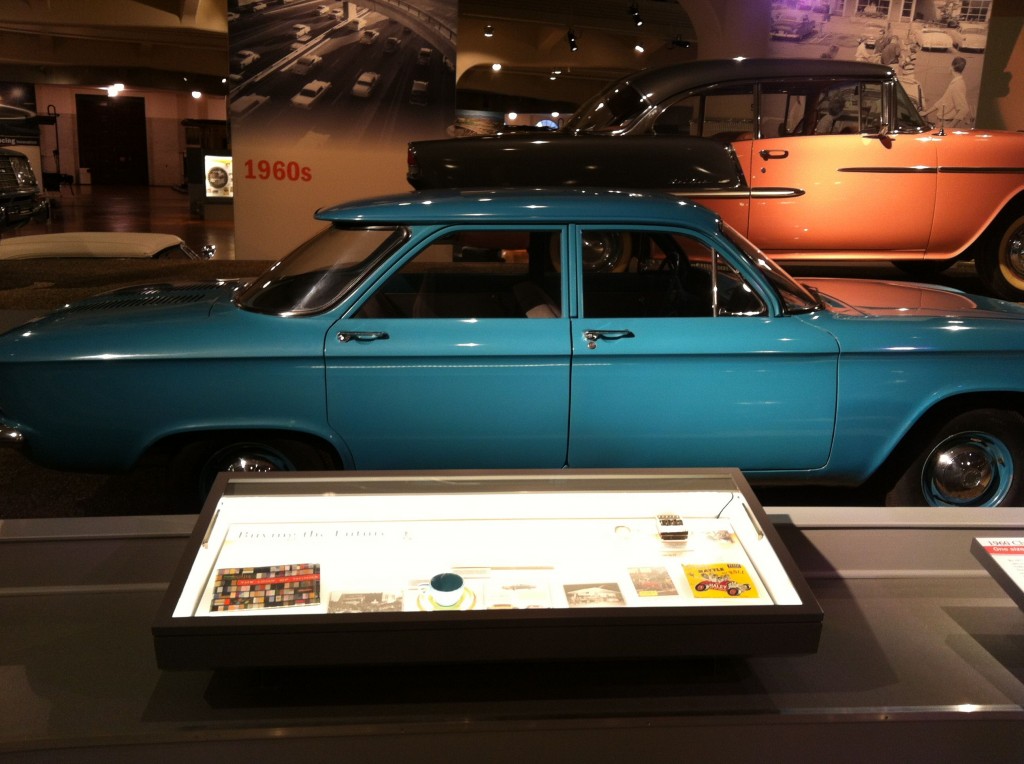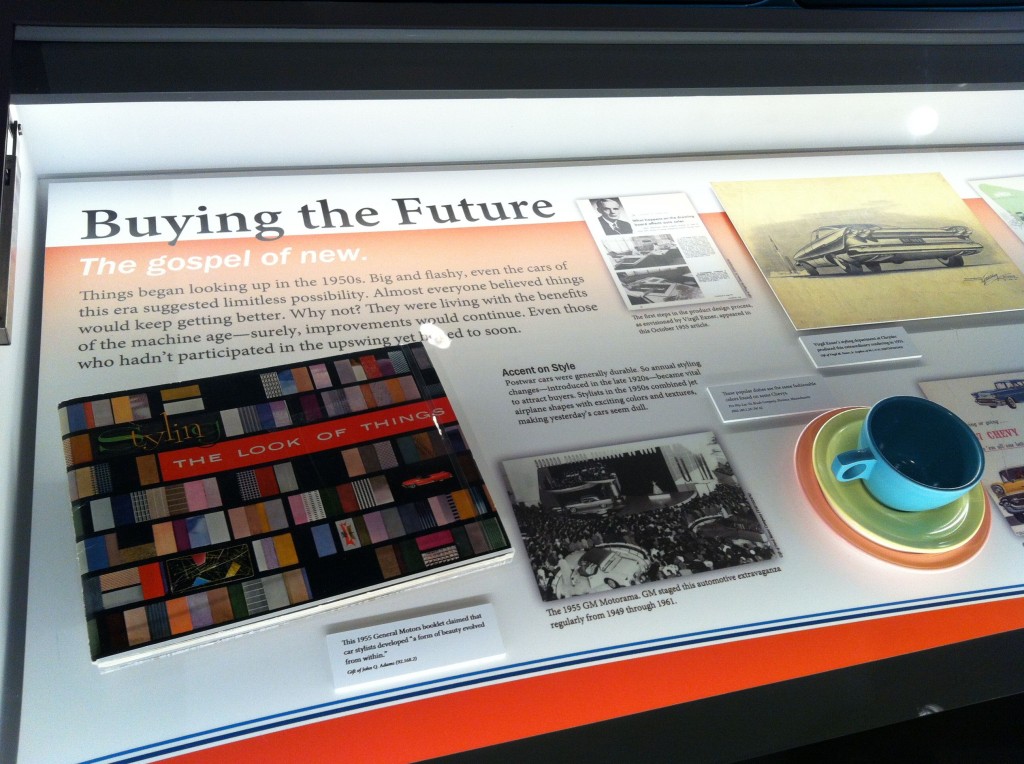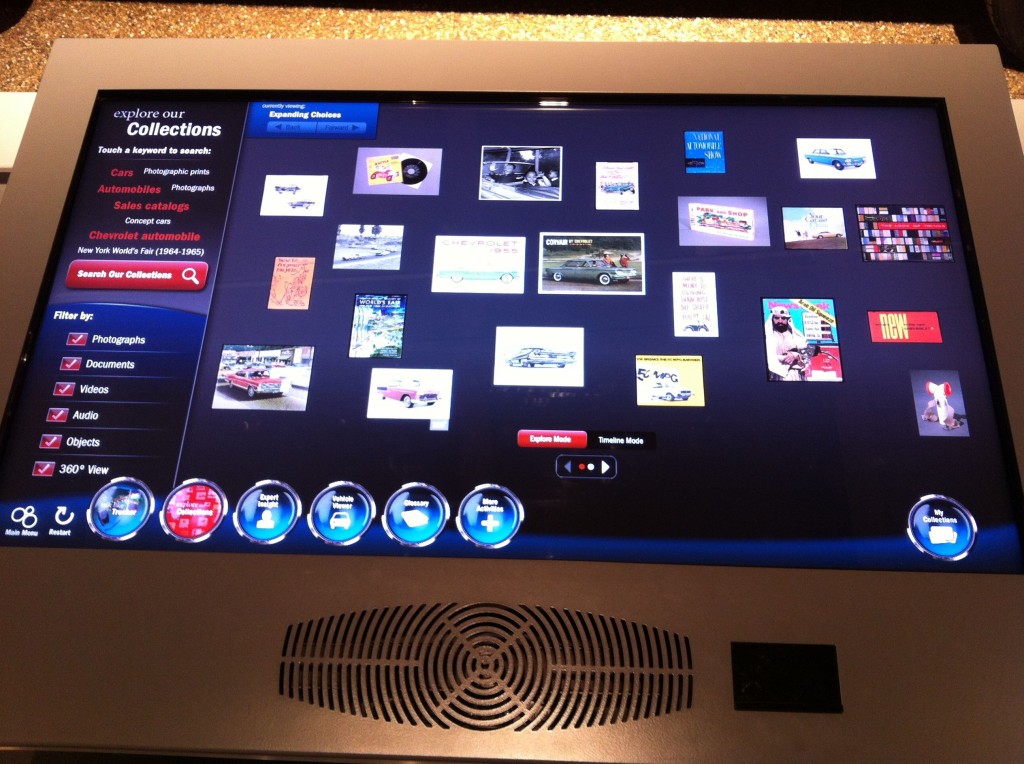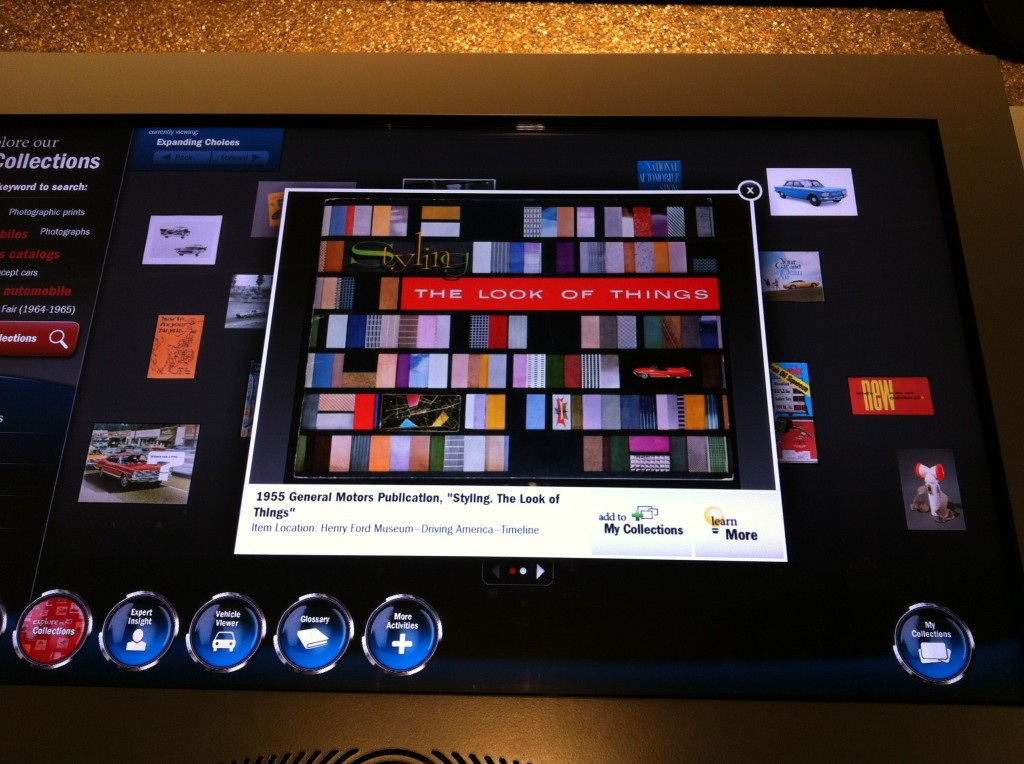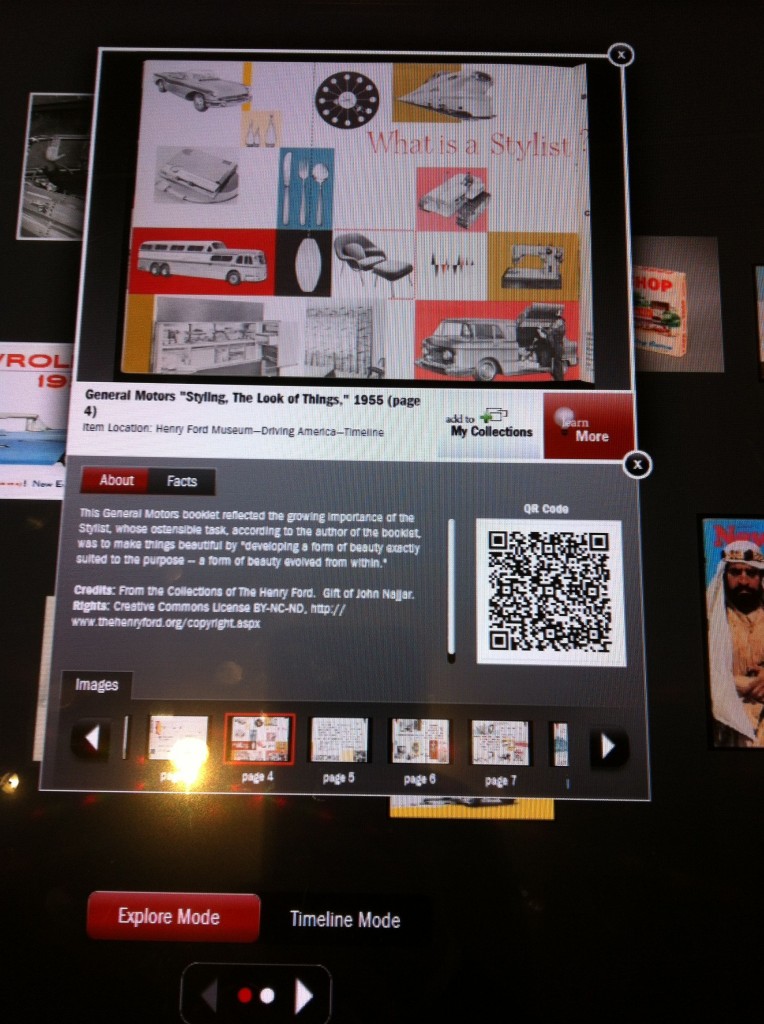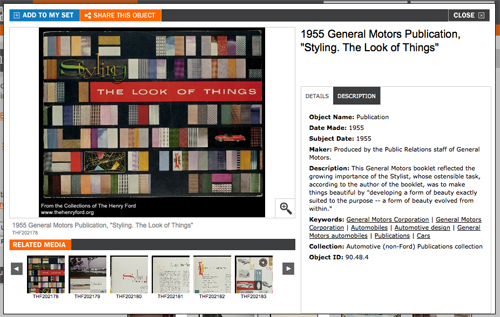I’ve posted quite a bit about digitization process and rapid capture, both here and elsewhere, but not so much about how the images created in these processes are used. The recently opened Driving America exhibit provides an opportunity to describe how those images are supporting the exhibit and the ways in which they can be accessed.
Although Driving America has the automobile as its core, and occupies roughly the same physical space, the exhibit is extensively revised over its predecessor. Among the many changes that have been made is the increased use of electronics in the form of a number of interactive touch screen stations located throughout the exhibit space.
Each screen is linked it’s own local computer, which in turn is linked to a database containing object metadata and images fed from the collections management system (Ke Systems EMu). That same database is also linked to an online collection display web site providing a connection between the physical exhibit location and the virtual space. In most cases the exhibit stations and the web site display the same 1200×1200 12ppi jpeg image derived from the tiff master file.
Over the course of the last year I’ve used the rapid capture equipment and workflow to generate several thousand images for inclusion in the database. In particular, I captured quite a few of the archival items that are mounted directly in the exhibit display cases.
Many of these items are multi-sided or multi-page, such as maps or booklets, and where possible were fully imaged cover-to-cover, taking advantage of the speed and flexibility of rapid capture.
However, there’s an issue with displaying a multi-page item in a case in that only the cover, or one or two sides/pages, are visible to the exhibit visitor. So how can the rest of the item be made accessible?
Take for example this General Motors booklet, “Styling. The Look of Thingsâ€:
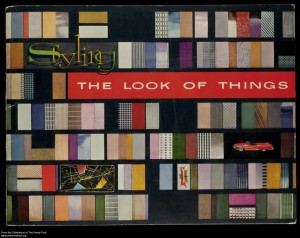
1955 General Motors Publication, "Styling. The Look of Things". Object ID 90.48.4, from the collections of The Henry Ford.
As mounted in the case on the museum floor the booklet looks like this:
The colorful cover makes for a snappy display in the case, but you can’t view what’s between the covers, unless you were to come over to the Reading Room and the second copy was pulled for you from the stacks (which, btw, we would be happy to do). While I would love every one of the museum visitors to also stop by the Research Center and do a bit of reading and exploration realistically that’s just not going to happen. So we need another way to deliver the material, which is where the online portions of the exhibit come in to play.
Within the museum you can use the touch screen interface to see more of the booklet:
And then online through the collections website you can also view the entire booklet:
Nearly every document, image and 3D artifact used in the physical exhibit can be viewed online in this manner, thus providing a way for visitors to further explore the archival materials without necessarily having to visit the Reading Room in person.
So far the display systems work well in showing individual items like the styling booklet, and can present predefined groups or sets of items. The exhibit stations also display the current location of items, so for archival objects not mounted in the cases visitors can see that those materials are available in the Research Center. This may prompt more drop-in reading room visits.
Still to be developed, at least for the online display, is the ability to call up groups of items based on their folder/box/series location for use in linking with a finding aid, and the functionality to display text when presenting groups of items, which could be used for example to display series-level description. These functions would serve to improve the presentation of museum and village artifacts as well, such as in the display of both a building and it’s contents.
UPDATE 09Mar2012: The Digital Collections Initiative Manager at The Henry Ford has written more about about the display system and the process needed to put images of 3D objects online on the THF blog: http://blog.thehenryford.org/2012/03/hubcap-tales-behind-the-scenes-of-digitizing-our-collections/
– Brian

